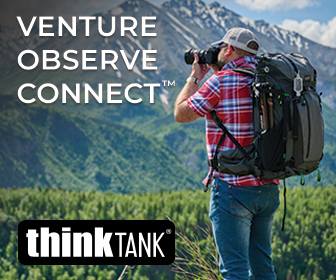Nikon D5500 Review
Nikon D5500 Performance - How well does it take pictures?
Ultimately, it is image quality that makes a camera worth buying. For an SLR, image quality greatly depends on the lens. While color, noise, exposure and dynamic-range are properties of a camera, distortion, vignetting and chromatic aberrations are properties of the lens. Sharpness and contrast depend on the weakest link. That is, the camera cannot capture more details than the lens lets through. Conversely, it is quite possible for a lens to transmit more details than the sensor can capture.

Note that the 24 megapixels sensor of the D5500 is very demanding and requires a lens with great resolving power. A high-end Nikkor AF-S DX 17-55mm F/2.8G IF-ED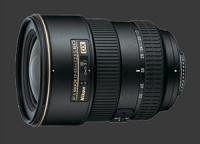
Nikkor AF-S DX 17-55mm F/2.8G IF-ED will certainly do but will look over-sized and make the D5500 front-heavy. While there were several kit-lenses sold with entry-level Nikon DSLRs over the years, the new collapsible Nikkor AF-S DX 18-55mm F/3.5-5.6G VR II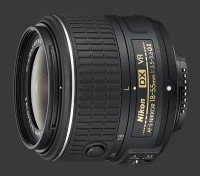
Nikkor AF-S DX 18-55mm F/3.5-5.6G VR II truly stands out optically. Older Nikkor 18-55mm lenses are simply unable to resolve 24 megapixels of details but the new one gets very close when stopped down one or two stops according to the focal-length
Image-quality is quite good with a suitable lens. During the review period we used both lenses mentioned above and results can be seen in the image-gallery. The lack of anti-alias filter means it can capture very fine details, on-par with Nikon's mid-range DSLRs. Even when shooting at mid-range ISO, the D5500 retains a high amount of details.
Noise levels are surprisingly low until ISO 800 and barely noticeable at ISO 1600. By ISO 3200, a hint of noise starts appears. Considering 24 megapixels of resolution though, this is unlikely to be visible in most common print sizes. As usual, noise increases steadily at each additional stop. Still, ISO 6400 and 12800 are quite usable for mid-size prints. The maximum ISO 25600 setting is a stretch but remains usable for small 4x6 prints and web use.
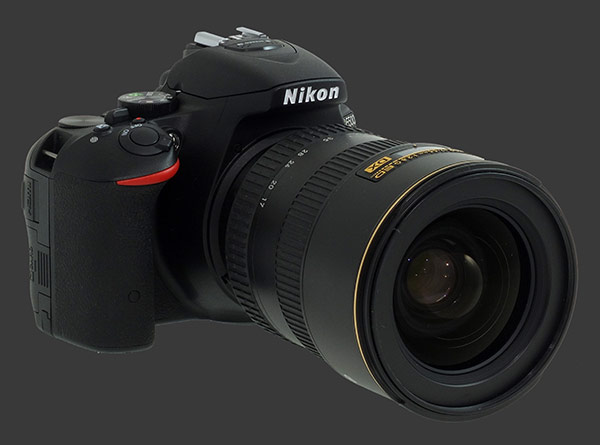
This ISO performance is a full-stop improvement over its predecessor. Nikon seems to have subtly admitted that by having the entire range now standard, rather than locking out ISO 25600 as an Expanded sensitivity. This helps us reviewers as that sensitivity now appears in the proper EXIF field.
The multi-segment metering of this DSLR is generally reliable and consistent. It overexposes a little more than average, particularly with small-to-medium highlights. Usually, dialing -½ EV for exposure-compensation avoids the problem. Sometimes, a full-stop is required. Underexposure is extremely rare though. With scenes of limited dynamic-range, it tends to produce mid-tone exposures. It could to better by exposing to the right (ETTR) instead which retains more tonalities.
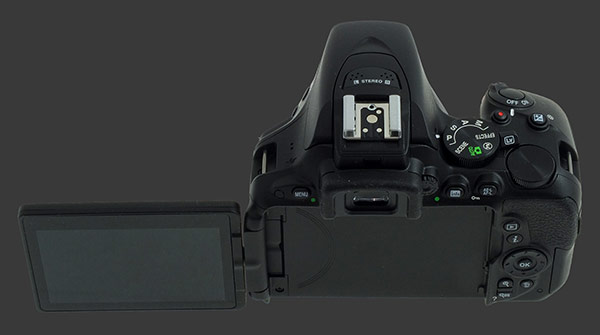
There are 7 Picture Control styles and each can be modified in terms of Sharpness, Clarity, Contrast, Brightness, Saturation and Hue. These parameters are those introduced on the full-frame D610 reviewed here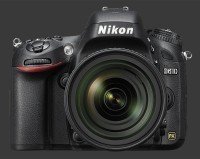
Nikon D610 which can be adjusted in extremely fine steps. This helps avoid the hassle of shooting RAW by giving the photographer the ability to fine-tune the look of images to his liking beyond any other entry-level DSLR.
The Neutral setting provides a good base for accurate colors. To improve things, set Hue to +0.5. Default Saturation and Brightness are spot-on but images appear somewhat dull. To get more impact while still looking natural, simply add +1 to Contrast and +1.5 to Clarity. This makes details in the mid-tones more distinct, adding crispness to photographs.
Sharpness is controllable in a whopping 41 steps, on a scale from 0 to 9 with quarter stops. The default of 2 is notably soft, particularly for a camera without an anti-alias filter. Pushing it to 3.25 considerably improves sharpness without visible artifacts. Beyond that lies edges with halos.
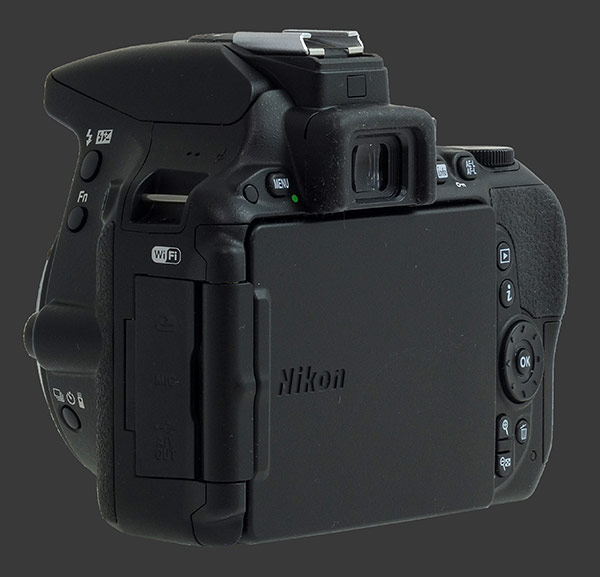
The white-balance system performs well. Preset and custom white-balance are very accurate. Automatic white-balance is good but not perfect. In broad daylight, there is not much to complain about but it sometimes leaves a cast under artificial light at night. Most times, the cast is gentle and color-temperature is rarely significantly off. Custom white-balance works just as intended though.
Compared to other entry-level offerings, the Nikon D5500 is impressive when it comes to speed. This DSLR responds immediately to most operators and there is no shutter-lag, which is followed by an extremely short blackout. As this camera does not have a focus motor, it relies on lenses to perform AF. This means focus speeds can be vary greatly. While the new kit-lens has improved optically, its focus-speed is sluggish by modern standards. Switching to an AF-S 17-55mm F/2.8 and things improve considerably.
Performance of the D5500 is characterized by the following measurements:
- Power On: Instant. Excellent.
- Power-Off to First-Shot: Under 1s. Superb.
- Autofocus: ¼ - 1s. Heavily depends on the lens. Very good to slow. Focus confirmation is instant though.
- Shutter-Lag: Nearly instant with ultra-short blackout. Great.
- Shot-to-Shot: Just over ½s. Better than average.
- Video Recording: Instant to start and stop. Superb.
- Power Off: Instant. Excellent.
As shown above, this DSLR performs quite well. Shot-to-shot speed is reasonable. While the D5500 lacks a video mode, the camera instantly starts and stop filming. Nothing is missed. Unfortunately, framing cannot be setup due to the switch in aspect-ratio but, otherwise, the D5500 delivers a benchmark video-performance.
The Nikon D5500 is Shooting-Priority which lets it return instantly to Capture mode from Playback by touching the shutter-release. The only time it takes longer is when shooting in Live-View. From there, exiting Playback takes just a little more time. Still, only a fraction of a second more.
This entry-level DSLR has good throughput to the memory card and a reasonable internal buffer. It manages to shoot 16 RAW files or 100 JPEG images before slowing down. This gives it a whopping 20 seconds of full-speed continuous drive.
The D5500 has a quoted battery-life of 820 shots-per-charge, based on the CIPA standard. This a good battery-life and better than its predecessor The lack of a built-in GPS could explain this. Without using the built-in flash, more photographs can be taken without running out of power.
Nikon D5500 Conclusion
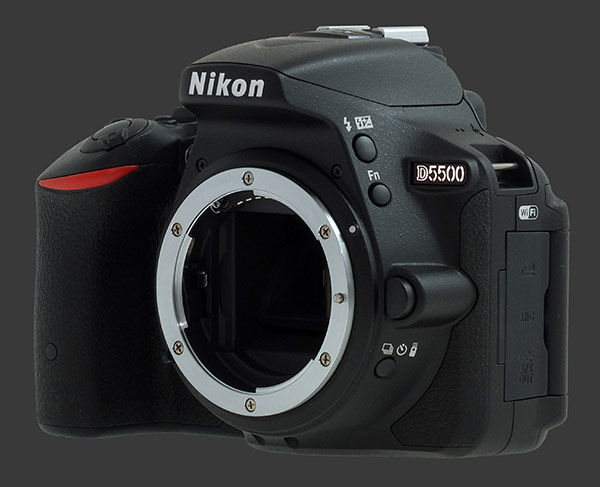
The Nikon D5500 proves to be an impressive entry-level DSLR. Its 24 megapixels CMOS sensor without anti-alias filter delivers excellent image-quality, a step above previous generations. Features of the D5500 are standard for its class with a refined and easy-to-use ergonomics.
Noise-levels are low and dynamic-range is high which makes this DSLR capable of rather large prints. Sharpness, with a sufficiently good lens, as excellent. Even the new collapsible Nikkor AF-S DX 18-55mm F/3.5-5.6G VR II
Nikkor AF-S DX 18-55mm F/3.5-5.6G VR II lens sold as kit-lens manages to get plenty of details when stopped-down one or two stops. To get the most out of the D5500, investment in a high-end lens is required.
Metering is good but certainly could be improved. Learning to use EC will go a long way to improving the output of this DSLR. Color and white-balance are not perfect but quite good. Both can be tuned in very fine-steps to provide realistic output straight out of the camera.
The Nikon D5500 is very quick and responsive. Its performance is only at the mercy of slow lenses, such as the kit-one, which make autofocus sluggish. A better lens though, makes it possible to focus very-quickly for an entry-level model. This may be a fast camera but, remember, its entry-level status means it is not so efficient to operate.
Video performance from this DSLR is very nice. The output quality is good with smooth motion and little compression artifacts. Plus, recording starts and stops instantly which rarely happens on a camera without a dedicated Video mode. The only issue here is that framing gets cropped when recording starts since the camera has a 3:2 sensor but HD video is 16:9.
Both feature set and ergonomics are very reasonable for an entry-level DSLR. Pros will feel limited but novices will not find this camera daunting. Its more advanced features like spot-metering and white-balance fine-tuning make nearly any desired result achievable. Luckily for advanced photographers, the Nikon D5500 supports an optional remote-trigger which get around the annoyance of the self-timer which resets itself between shots.
The Nikon D5500 is capable of some truly excellent output. It delivers image-quality worthy of a DSLR in a compact and simple-to-use design. Given a 24 megapixels sensor, it can be used to create very large prints or shoot high-ISO images to be scaled down to the point where noise is no longer visible.
 |
Please Support Neocamera
All information on Neocamera is provided free of charge yet running this website is a huge endeavor. Purchases made via affiliate links found throughout the site help keep it running and up-to-date. There is no additional cost to you, so please consider buying via these links to our affilates:
If you found any information on this site valuable and did not purchase via our affiliate links, please considering donating via PayPal:
Any amount will be greatly appreaciated. Thank you for your support!
Nikon D5500 Highlights
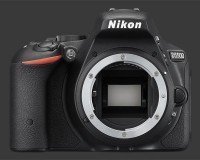
Sensor-Size: 24 x 16mm

Actual size when viewed at 100 DPI
| 24 Megapixels DSLR | ISO 100-25600 |
| Nikon F Mount 1.5X FLM | Shutter 1/4000-30s |
| 95% Coverage Medium Viewfinder | Full manual controls, including Manual Focus |
| Automatic Eye-Start sensor | Custom white-balance with 2 axis fine-tuning |
| Built-in Dust Reduction | Spot-Metering |
| 5 FPS Drive, 100 Images | Hot-Shoe |
| 1920x1080 @ 60 FPS Video Recording | Stereo audio input |
| 3.2" LCD 1 Megapixels | Lithium-Ion Battery |
| Secure Digital Extended Capacity |
Updates
2024.04.03

Fujifilm X-T5 Review
Newest Fujifilm flagship boasting a 40 MP APS-C sensor, 5-axis IBIS with 7-stop efficiency, 15 FPS continuous drive, 6.2K Video capture, dual control-dials and dual SDXC UHS-II slots in a sturdy weatherproof and freezeproof body.
2023.11.20

Best Digital Cameras of 2023
Find out which are the Best Digital Cameras of 2023. All the new Mirrorless Digital Cameras from entry-level to high-end professional.
2023.07.10

Fujifilm X-H2 Review
40 Megapixels APS-C Hybrid Mirrorless Digital Camera with 7-stop IBIS. Fastest shutter ever and 8K video capture. Large builtin EVF with 0.8X magnification and 5.8 MP, plus an Eye-Start Sensor. Packed with features and large number of controls in a weatherproof and freezeproof body.
2023.05.07

Sony FE 20-70mm F/4G Review
Review of the unique Sony FE 20-70mm F/4G lens. The optical zoom of this lens spans ultra-wide-angle and medium focal-length coverage, making it one of the most versatile Full-Frame lenses on the market.
2023.01.15

Huion Inspiroy Dial 2 Review
Review of the Huion Inspiroy Dial 2 tablet, a medium sized drawing surface with dual dials and customizable buttons. Connects via USB-C or Bluetooth 5.0 with Windows, Linux and Android support.
2022.12.08

How to Pack for a Photo Trip
Find out how to pack for a travel photography trip, carry your gear safely while meeting airline regulations.
2022.11.13

Best Digital Cameras of 2022
The best digital cameras of 2022. A short list of the most outstanding models in their respective categories. Choose one for yourself or as a gift.
2022.09.21

Pentax DA* 60-250mm F/4 SDM Review
Review of the Pentax DA* 60-250mm F/4 SDM, the constant-aperture telephoto zoom with the highest zoom-ratio on the market.
2022.09.20

Pentax DA* 50-135mm F/2.8 SDM Review
Review of the Pentax DA* 50-135mm F/2.8 SDM, the lightest professional telephoto zoom native to the K-mount.
2022.09.10

Pentax DA* 11-18mm F/2.8 DC AW Review
Review of the Pentax DA* 11-18mm F/2.8 DC AW, the widest professional ultra-wide zoom native to the K-mount.
2021.11.24

50 Gifts Under $50 For Photographers in 2021
50 Gifts photographers will love. All for under $50 USD. 2021 Edition.
2021.11.17

Best Digital Cameras for 2021
Neocamera shows which are the very best Digital Cameras for 2021 in every category: Mirrorless, DSLR, Premium Compact, Ultra-Zoom and Rugged.


